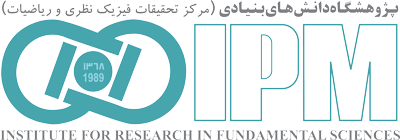“School of Astronomy”
Back to Papers HomeBack to Papers of School of Astronomy
| Paper IPM / Astronomy / 16829 |
|
||||||||||||||||||||
| Abstract: | |||||||||||||||||||||
|
Using the MEGAFLOW survey, which consists of a combination of MUSE and UVES observations of 22 quasar fields selected to contain strong Mgâ??II absorbers, we measure the covering fractions of Câ??IV and Mgâ??II as a function of impact parameter b using a novel Bayesian logistic regression method on unbinned data, appropriate for small samples. We also analyse how the Câ??IV and Mgâ??II covering fractions evolve with redshift. In the MUSE data, we found 215 z=1â??1.5 [Oâ??II] emitters with fluxes >10â??17 ergâ??sâ??1â??cmâ??2 and within 250â??kpc of quasar sight-lines. Over this redshift path z=1â??1.5â� , we have 19 (32) Câ??IV (Mgâ??II) absorption systems with rest-frame equivalent width (REW) Wr> 0.05â??� associated with at least one [Oâ??II] emitter. The covering fractions of zâ??1.2 Câ??IV (Mgâ??II) absorbers with mean Wrâ?? 0.7â??� (1.0â??�), exceeds 50 per cent within 23+62â??16 (46+18â??13â� ) kpc. Together with published studies, our results suggest that the covering fraction of Câ??IV (Mgâ??II) becomes larger (smaller) with time, respectively. For absorption systems that have Câ??IV but not Mgâ??II, we find in 73 per cent of the cases no [Oâ??II] counterpart. This may indicate that Câ??IV comes from the intergalactic medium (IGM), i.e. beyond 250â??kpc, or that it is associated with lower mass or quiescent galaxies
Download TeX format |
|||||||||||||||||||||
| back to top | |||||||||||||||||||||



















